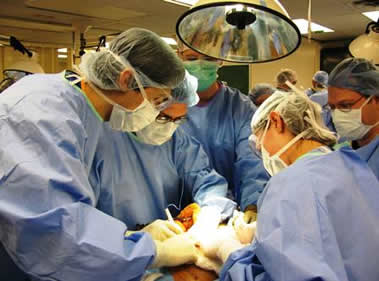
The 虚拟教育与仿真实验室 (V.E.S.L.) was created to be a local and regional resource for the skills training to a variety of audiences, including medical students, residents, physicians in practice and other allied healthcare personnel.
The V.E.S.L. is used for curriculum-based skills acquisition and provides continuing medical education (CME) activities for the 乔治亚医学院 at 奥古斯塔大学 medical community and healthcare personnel of the Central Savannah River Area (CSRA). In addition to serving as an educational and training resource for the institution and regional community, the V.E.S.L. is also an educational research venue to explore and validate current and evolving tools used for curriculum-based skills training.
After four years of medical school, surgical education in the United States has followed a preceptorship model introduced by Dr. Halsted, whereby the trainee learns by “following” the teacher. Surgical residents are given graded responsibility over 5-7 years until they have learned surgical principles and mastered commonly performed operations. The traditional dogma for learning technical skills has been, “See one, do one, teach one.” This dogma is obsolete in the era of minimal access surgery, evolving technology, limited resident work hours, and faculty time constraints. In the history of surgical education, we have done little to determine whether these same skills are better taught outside the operating room. This has changed in recent years with the evolution of technology and development of viable skills transference assessment tools like the Objective Structured Assessment of Technical Skills (OSATS) and the McGill Inanimate System for Training and Evaluation of Laparoscopic Skills (MISTELS).
Basic technical skills and cognitive knowledge required to safely master emerging technology must be taught outside of the operating room beginning with students and residents. For example, teaching basic wound closure technique in the operating room (i.e. suturing) takes time, is expensive and does not lead to the efficient use of resources. Basic suturing and knot tying instead can be taught using basic instruments in a skills lab setting. Principles of wound healing can be integrated into learning objectives and after skills are mastered, students and residents can apply them in the operating room more efficiently. We are taking this concept and applying it to new and emerging technologies, which impacts surgical education and practice.
We recognize the impact that emerging technology has on the ability to efficiently teach technical skills in the operative arena. As such, we seek to teach such skills outside of the operating room, making trainees more efficient in the operating room, with the overall goals of better trained residents and greater efficiency in the OR.